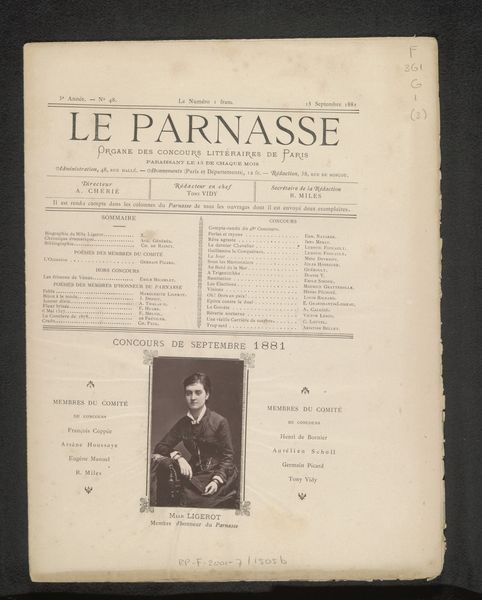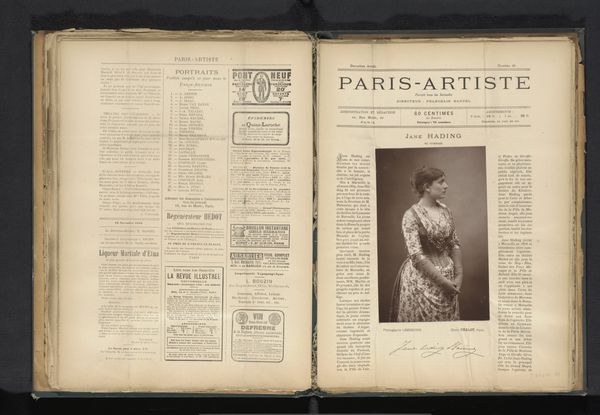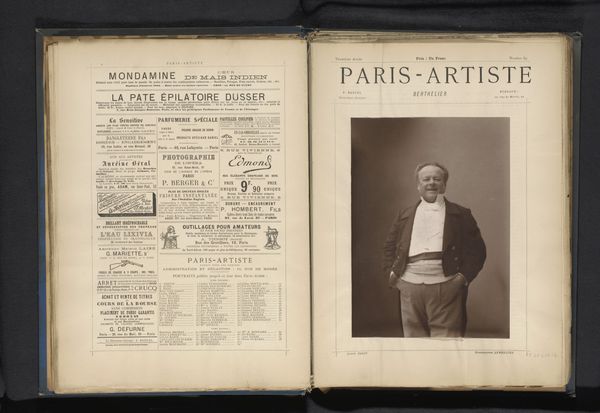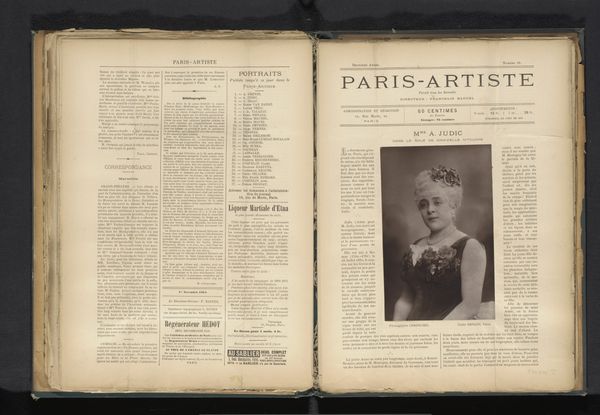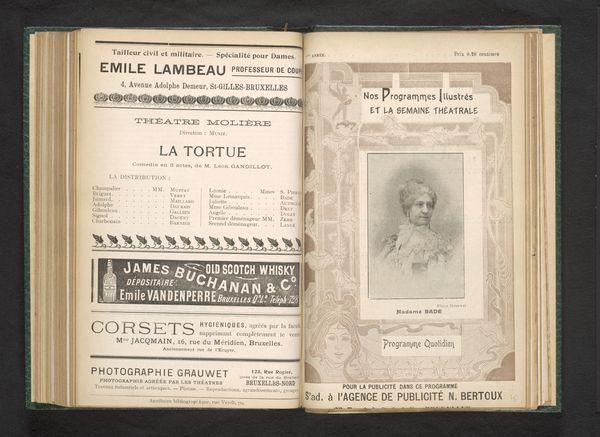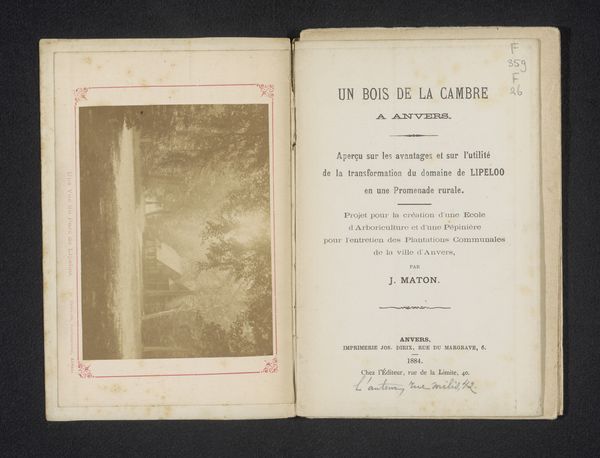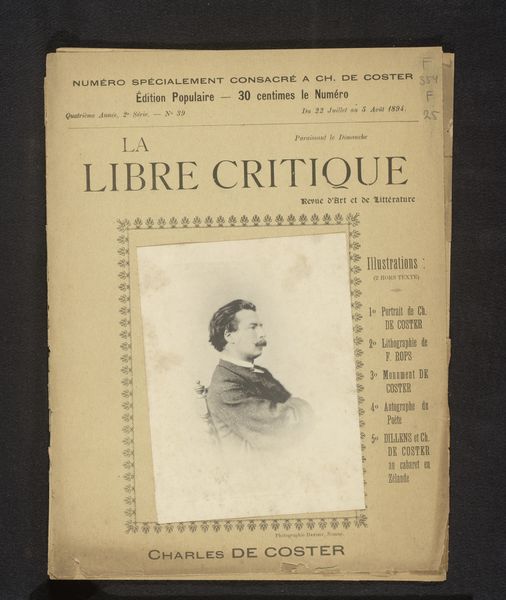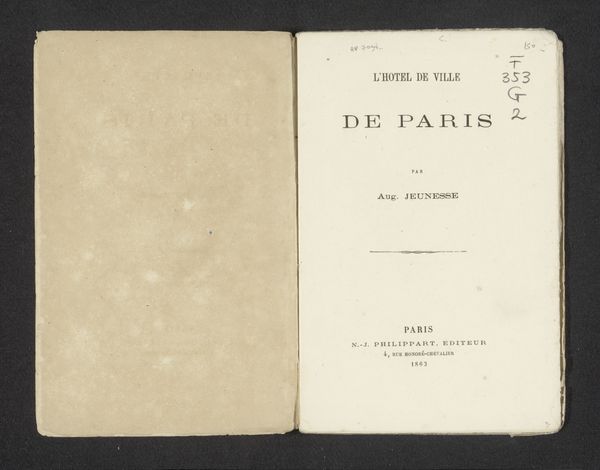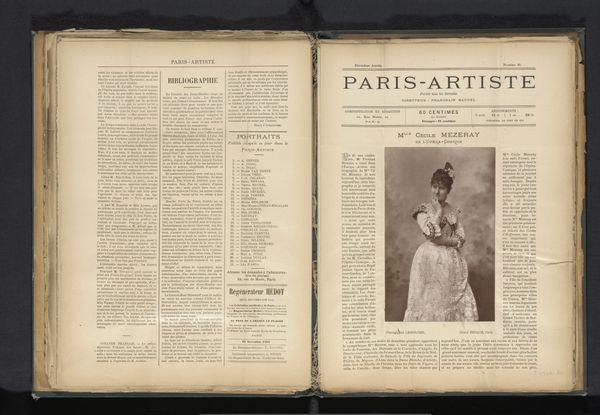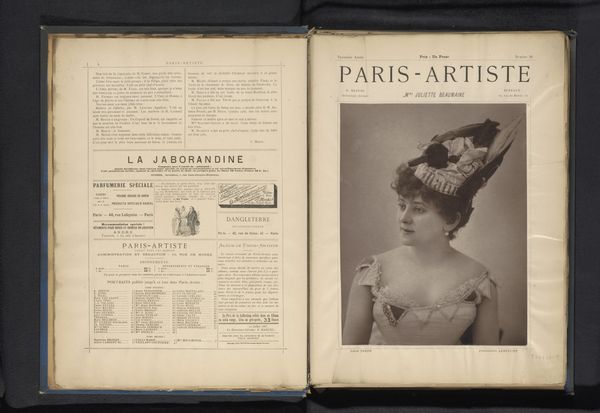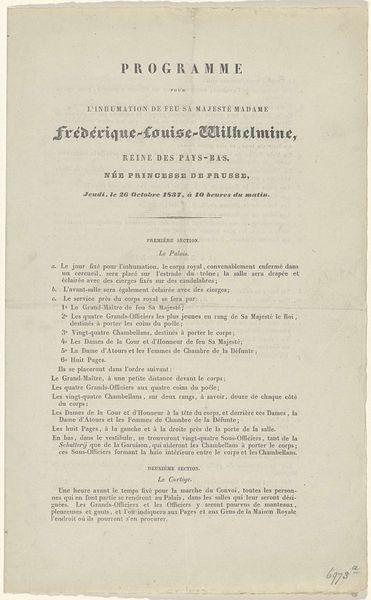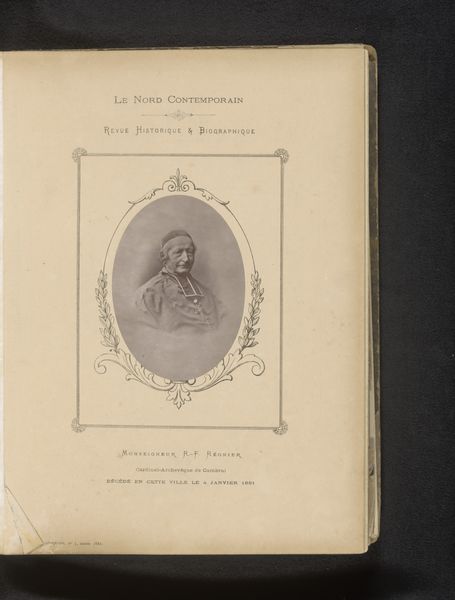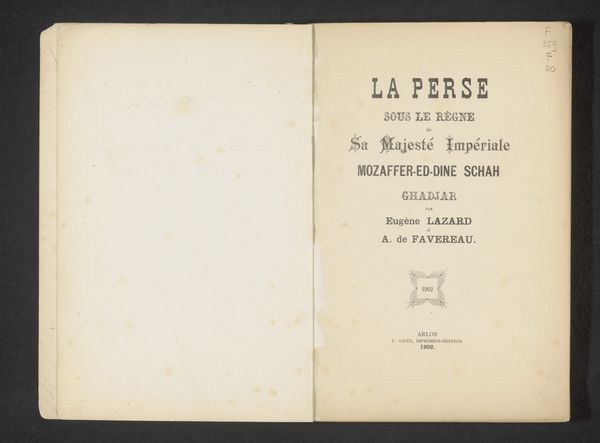
graphic-art, print, paper, photography
#
portrait
#
graphic-art
# print
#
impressionism
#
paper
#
photography
Dimensions: height 333 mm, width 255 mm, thickness 4 mm
Copyright: Rijks Museum: Open Domain
Curator: This photographic print is a page from "Le Parnasse," a literary magazine from around 1881-1885. Its composition is striking—a balanced asymmetry of text, committees, and a centered portrait. Editor: It's really a fascinating artifact. I immediately feel the weight of the 19th-century literary establishment bearing down—almost like the photographic subject, Félicien Maurel, is pensively judging the reader from beyond the grave. Curator: Visually, notice the interplay of typographic hierarchy, organizing diverse information—names of directors, members, competition details, almost like a snapshot of intellectual activity. The print’s impressionistic blur and soft tonality suggest an evolving visual culture embracing new media. Editor: That's interesting, especially because "Le Parnasse" positioned itself as a hub of literary competition. I think situating Maurel's image in relation to those competition structures and other members speaks volumes about hierarchies, about who holds influence within that exclusive artistic domain. And it prompts us to reflect critically on literary establishments. Curator: Precisely! Observe the textural contrast. The sharp details in Maurel's photograph amidst the softer ink of the print—a convergence of traditional printing with photographic portraiture. And what of Maurel’s seated, contemplative pose? This is carefully constructed representation of literary prowess. Editor: Beyond an individual, this speaks to larger issues concerning authorial representation and self-fashioning. Parnasse and its contents promoted ideas of elitism that should be criticized through the lens of more contemporary views regarding cultural accessibility. Curator: I concur on its cultural resonance. Yet I am drawn back to the careful arrangements of text, photography, line. All work together beautifully in the picture plane to reflect the social context of the magazine. Editor: Ultimately, I think examining who gets represented and celebrated can reveal a lot about our contemporary moment of media over-saturation and echo-chamber curation, where we, too, confront complex questions of visibility and influence.
Comments
No comments
Be the first to comment and join the conversation on the ultimate creative platform.
